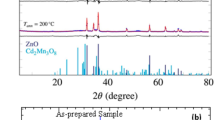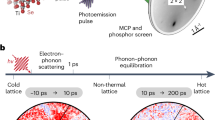Abstract
MR. SEDLEY TAYLOR has, it seems to me, written his criticism on my letter published in NATURE, Feb. 10th, far too hastily. I do not compare the diameter of the rings with one another, but their cubes, otherwise we should be led in establishing the musical analogy to the absurd equation 1/3√2=1/2. It would perhaps have been better to have said, that the ratios of the spheres described on the diameters of the rings, taken successively from red to violet, two and two together, the 1st to the 2nd and the 2nd to the 3rd, &c., give a series of fractions identical with those expressing the relative lengths of the musical chords from D to C, ascending and taken in like manner. As Mr. Taylor doubts Prof. Zannotti's accuracy, I will quote the following passage from Biot's “Precis Elémentaire de Physique,” 3rd Ed., Vol. ii. I Paris, 1824, p. 400, et seq. Speaking of Newton, “Il mesura les diamètres des anneaux simples de même ordre, dans la partie intérieure et dans la partie extérieure de leur périmètre, et en les considérant successivement aux limites des diverses couleurs du spectre a commencé par le violet extrême. Suivant sa méthode constante, il prit soin de lier ces resultats par une loi mathématique qui les représentât avec une suffisante exactitude. Il trouva ainsi que les diamêtres, soit intérieurs, soit extérieurs, étaient sensiblement entre eux comme les racines cubiques des nombres 1/2, 9/16, 3/5, 2/3, 3/4, 5/6, 8/9, I, lesquels représentent les longueurs que doit avoir une corde de musique pour produire toutes les notes d'une gamme mineure; c'est-à-dire, que si l'on représente par I le diamètre intérieur d'un certain anneau, lors qu'il est formé par les rayons rouges qui composent la partie la plus extrême du spectre, 3√8/9 exprimera le diamètre intérieur du même anneau, quand il sera formé par les rayons qui sont la limite du rouge et de l'orange, et ainsi de suite jusqu' à 3√1/2 qui représentera le diamètre intérieur du même anneau quand il sera formé par les derniers rayons violets pris à l'autre extrémité du spectre.”
This is a preview of subscription content, access via your institution
Access options
Subscribe to this journal
Receive 51 print issues and online access
$199.00 per year
only $3.90 per issue
Buy this article
- Purchase on SpringerLink
- Instant access to full article PDF
Prices may be subject to local taxes which are calculated during checkout
Similar content being viewed by others
Author information
Authors and Affiliations
Rights and permissions
About this article
Cite this article
OKELY, W. Analogy of Colour and Music*. Nature 1, 653 (1870). https://doi.org/10.1038/001653a0
Issue date:
DOI: https://doi.org/10.1038/001653a0



